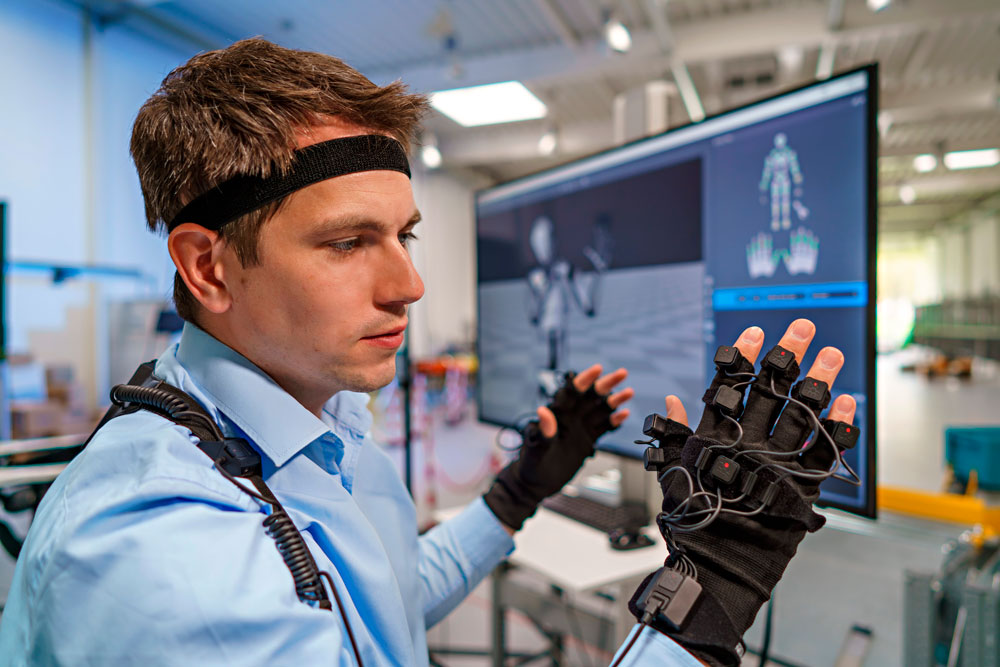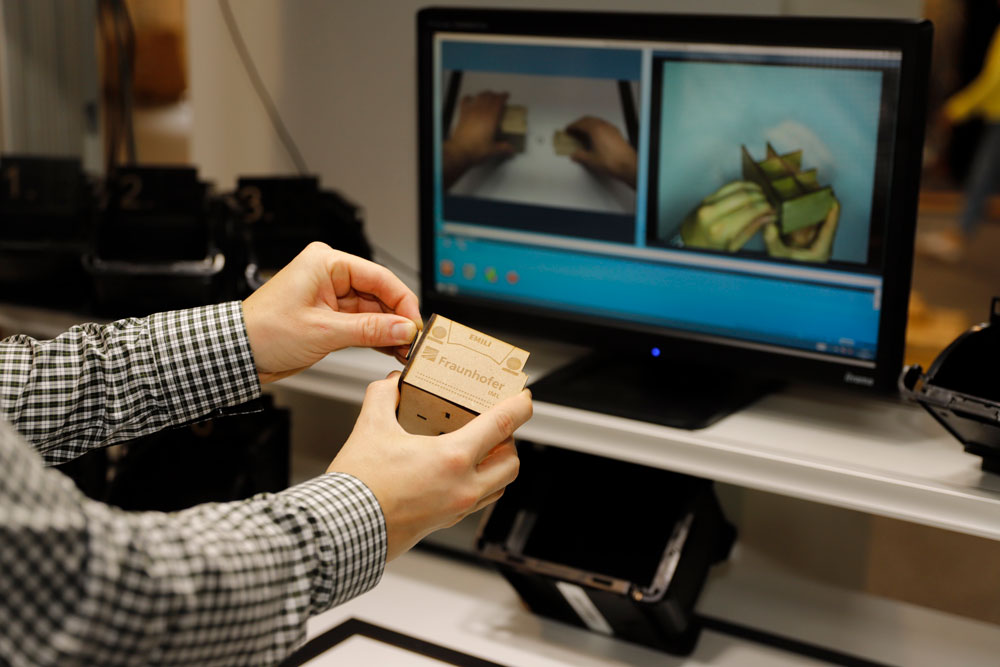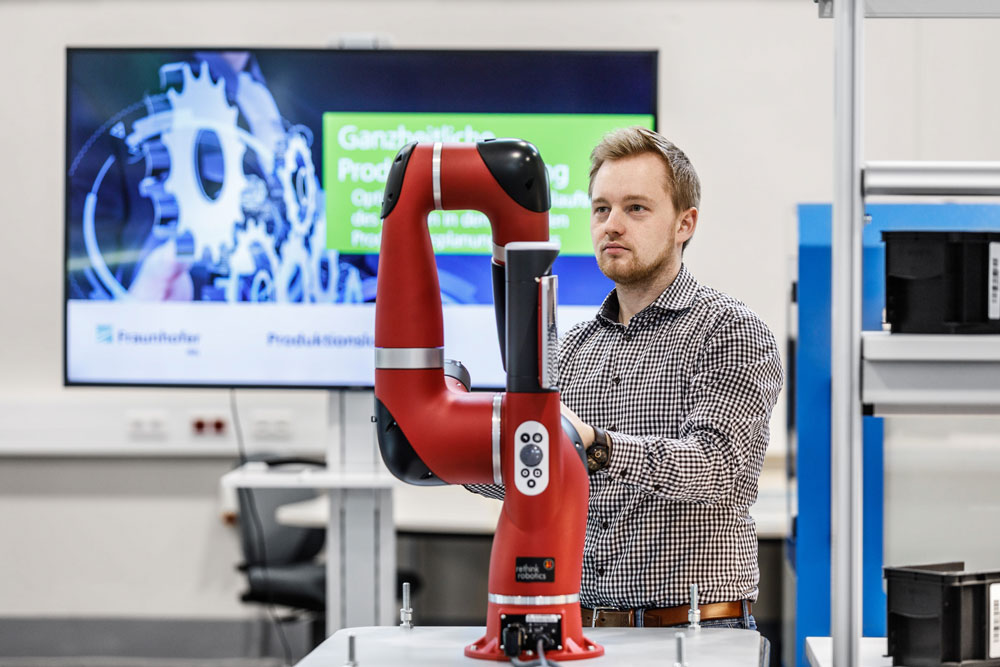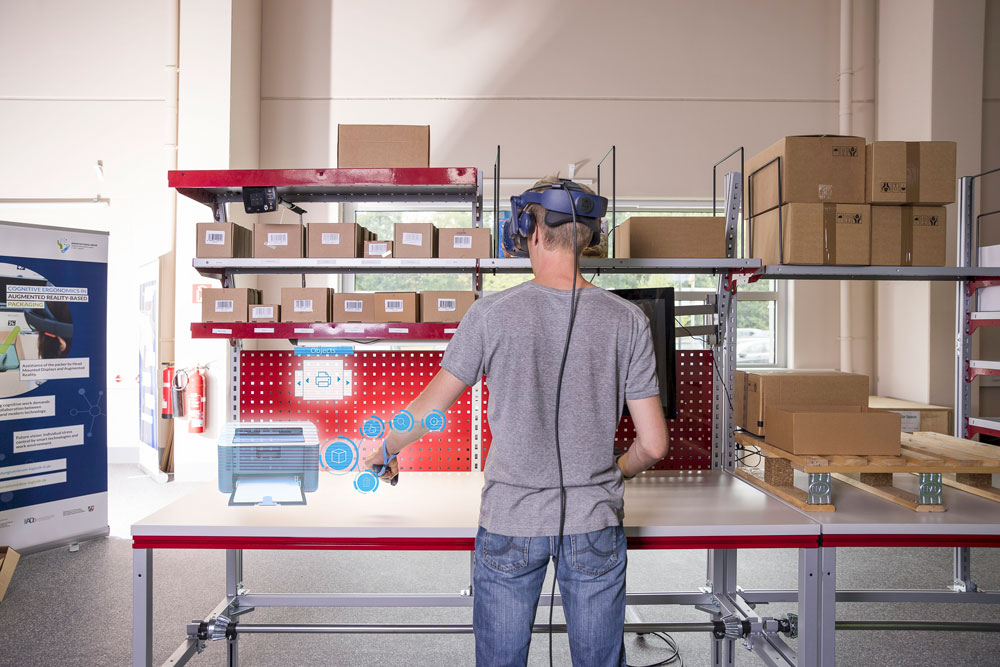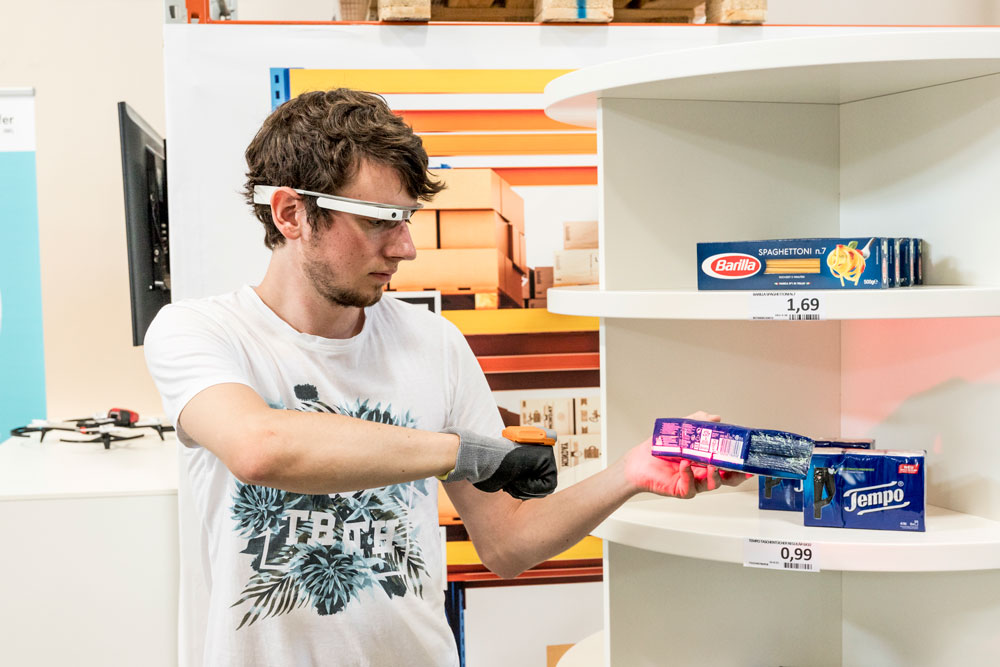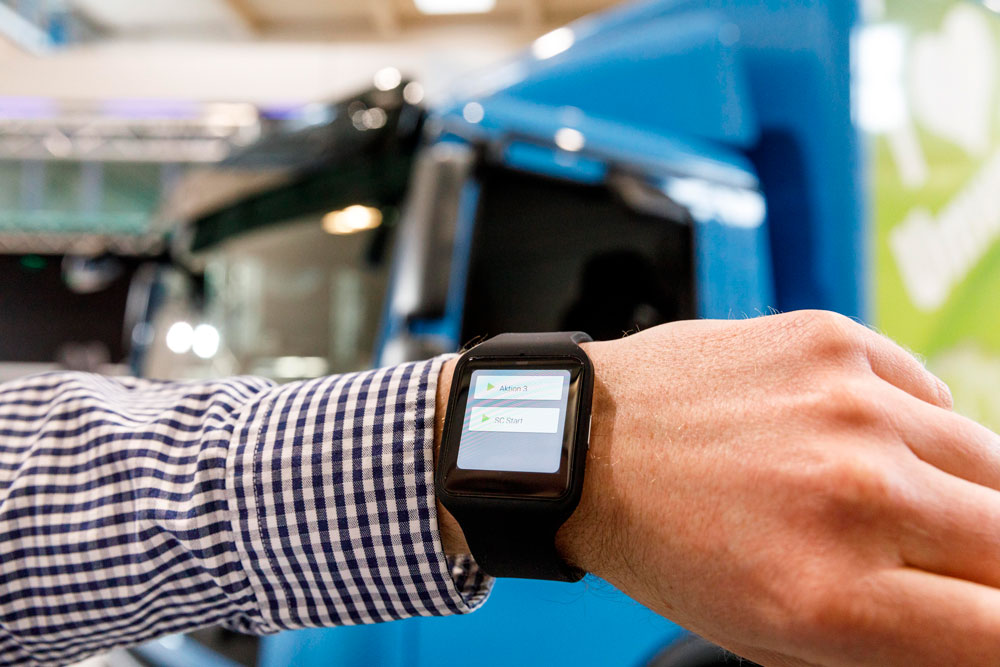Hello colleague robot: Humans & technology in a team
On the way to the Social Networked Industry
The vision of a human-centered Social Networked Industry is a task for the whole of society, in which experts from a wide range of disciplines work together on an equal footing. The goals are ambitious: they range from increasing production and resource efficiency and the flexibility of logistical processes and systems, to increasing the transparency of decisions and processes, to adapting business organization to preferred work and life models and, as a result, to increasing employee satisfaction. Fraunhofer IML is working in numerous initiatives and projects to implement this positive vision of the future.
 Fraunhofer Institute for Material Flow and Logistics IML
Fraunhofer Institute for Material Flow and Logistics IML